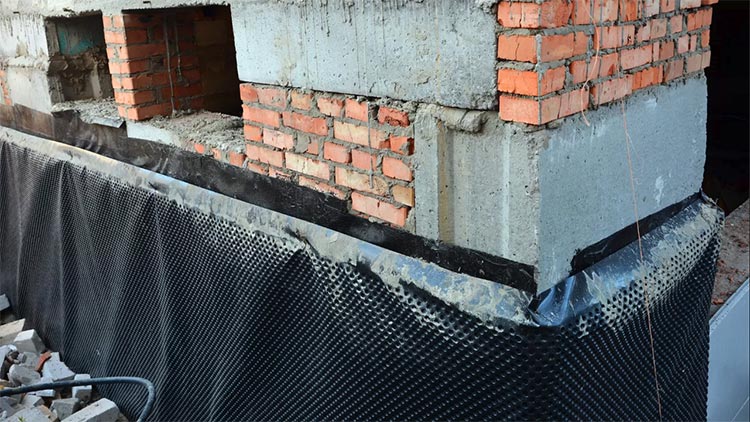Dry Foundation: Prevent Water Damage in Your Ottawa Basement
Ensuring a dry foundation is crucial for your home’s longevity and structural integrity. Water damage in the basement can lead to costly repairs, not to mention the potential for mold and mildew growth, which can pose health risks. Understanding the basics of water damage, employing effective waterproofing techniques, and maintaining your foundation can safeguard your home against these challenges.
Understanding the Basics of Water Damage
Water damage to your foundation can manifest in various forms, from visible efflorescence—a white, powdery substance left by evaporated water on walls—to the more insidious presence of mold. Recognizing these signs is the first step in preventing water damage. Foundation water damage is not just an aesthetic issue; it can lead to significant structural problems if left unaddressed.
The Role of Waterproofing Your Dry Foundation
The distinction between dampproofing and waterproofing is critical in foundation care. While dampproofing can slow the movement of water vapor, only a robust waterproof coating offers substantial protection against liquid water. Hydraulic cement is excellent for sealing small cracks and stopping water ingress, but for comprehensive security, a waterproof membrane or coating applied to the exterior of the foundation wall is necessary.
Key Waterproofing Techniques
Interior and exterior basement waterproofing methods are the primary defense against water damage. Internally, the sump pump installation effectively removes water that accumulates inside the basement. Externally, proper drainage systems are pivotal in directing water away from the foundation, preventing hydrostatic pressure from building up against basement walls. An installed moisture barrier can also impede capillary action, the process by which water moves up through porous materials like concrete.

Preventive Measures and Maintenance
Routine maintenance is essential in preventing basement water problems. This includes keeping gutters clean and ensuring downspouts extend far enough to direct water away from the foundation. Additionally, landscape drainage should facilitate proper water flow away from the home. Mulch, for example, should be kept at least 4-6 inches away from the foundation to prevent it from acting as a “moisture wick.”
Watering your lawn during dry periods can help prevent soil shrinkage, a potential cause of foundation cracking. Strategic landscaping can further assist in managing soil moisture levels and enhancing overall landscape drainage.
When to Seek Professional Help
While homeowners can take many preventative measures, certain situations call for professional intervention. If you observe significant cracking, bulging, or water infiltration beyond what basic waterproofing can address, consult with a waterproofing professional or structural engineer. These experts can provide comprehensive solutions tailored to your home’s specific needs.
Securing Your Home’s Foundation
Ensuring a dry foundation is pivotal in safeguarding your home against the detrimental effects of water damage. Confronting complex issues promptly by seeking foundation repair services ensures the longevity of your home’s structural integrity. It’s crucial to remember that investing in preventive measures now can save a considerable amount of money and hassle down the line.Proactively waterproofing your basement not only secures your home’s foundation but also contributes to your overall peace of mind. Avoid waiting for the first signs of water intrusion; by taking preemptive steps to protect your basement, you extend the care to your entire residence. Contact our experienced team of waterproofing specialists for detailed information or to arrange a professional consultation. Let’s ensure your foundation remains resilient and your home remains a safe haven.
